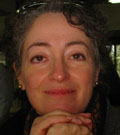Diversity in Old Age: Gender, Race-Ethnic, and Nativity Differences in the Older Population
Judith A. Seltzer and Jenjira Yahirun (UCLA)
The United States is still a relatively new or young country, but it has an increasingly old population. In 2008, 12.8% of the U.S. population was 65 years old or older. Roughly 100 years ago, only 4.3 percent of the population was 65-plus. The period from 2010 to 2030 will see particularly high growth in the percentage of the U.S. population who are elderly, as the Baby Boomers (those born between 1946 and 1963) “come of age.”
This “coming of age” treats the magic age marking the entrance into old age as 65 years old. Chronological age is an arbitrary marker of who is “old” because of substantial variation among individuals and over historical time in who looks or acts old, and increases in the number of years the typical American can expect to live. Economic hardship, discrimination, and other difficulties in life contribute to diversity in appearance and diversity in the experiences associated with being old as well diversity in the likelihood of living to a ripe old chronological age.
This report will investigate four dimensions of diversity in older age and how the old-age population has changed on these dimensions over time: chronological age (young old vs. old old), gender, race-ethnicity, and nativity status. Throughout the report, the researchers will explore diversity along these dimensions as we describe the growth in the elderly population and differences between those in their 50s and those who have passed the age 65 cut-off.
The study also will examine the living arrangements and family circumstances of the elderly population. An organizing theme is the extent to which older people are able to (and do) provide a safety net for their adult children and grandchildren and the extent to which older people instead may need to rely on their children as a safety net. Changes in U.S. families, including high rates of divorce, nonmarital childbearing, and cohabitation, have begun to affect the type and availability of kin, only some of whom co-reside.
This portrait of aging in America also will describe older persons’ activities, whether they are employed or retired, whether they have moved recently, and their health and wealth. These features of older persons’ lives affect their ability to provide a safety net to the younger generation and their need to rely on the family safety net themselves.
Census data, which are household-based, will be complemented by data from the Health and Retirement Study, a national survey of adults age 50 and older that includes information about all family members, including those who do not co-reside.


